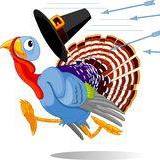When was the first weather vane invented?
A weather vane, wind vane, or weathercock is an instrument used for showing the direction of the wind. It is typically used as an architectural ornament to the highest point of a building. The word vane comes from the Old English word 'fana', meaning "flag".
Although partly functional, weather vanes are generally decorative, often featuring the traditional cockerel design with letters indicating the points of the compass.
Other common motifs include ships, arrows and horses. Not all weather vanes have pointers. When the wind is sufficiently strong, the head of the arrow or cockerel will indicate the direction from which the wind is blowing.
The weather vane was independently invented in ancient China and Greece around the same time during the 2nd century BCE. The earliest written reference to a weather vane appears in the Huainanzi, and a weather vane was fitted on top of the Tower of the Winds in Athens.
The oldest textual reference to a weather vane comes from the ancient Chinese text Huainanzi dating from around 139 BC, which describes a "wind-observing fan".
The Tower of the Winds on the ancient Greek agora in Athens once bore on its roof a weather vane in the form of a bronze Triton holding a rod in his outstretched hand, rotating as the wind changed direction.
Below this was a frieze adorned with the eight Greek wind deities. The eight-metre-high structure also featured sundials, and a water clock inside. It dates from around 50 BC.
More Info:
en.wikipedia.org














